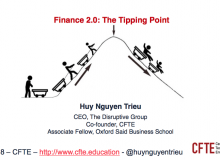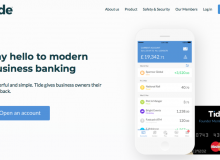This is an article I previously wrote for Financial News.
When mentoring start-ups, I sometimes hear a pitch like this: “With our revolutionary fintech service, we are looking to get 10,000 customers in the first year and need $300k of funding”. This immediately tells me I am talking to a first-time entrepreneur – or that they have the most amazing product. It is usually the former.
The counter-argument would be that Facebook managed to get one million users in less than a year with barely any funding, and that’s what many fintechs dream of achieving: viral marketing. In finance, many entrepreneurs have tried to create this virtuous circle, where word of mouth gets more and more customers to use your product, but it seldom worked. This is because financial products rarely exhibit the social features of a WhatsApp or Facebook, and it is no surprise that a rare fintech start-up that achieved some viral success was Venmo, a social payment app (which was acquired by PayPal).
So how can a fintech entrepreneur calculate whether customer acquisition is good value? Simple – the customer lifetime value (revenues expected for each customer over the relationship) must be higher (preferably three or four times higher) than the customer acquisition cost. The business model for a fintech start-up can, therefore, usually be analysed using three metrics: acquisition cost, revenue per customer and retention rate. If an entrepreneur expected a customer acquisition cost of $100, and $200 of revenues per customer, the investment would only be worthwhile if the retention rate was at least 50%.
This calculation is very important because it helps reveal some of the trends in fintech. Let’s look at the development of Betterment, one of the largest robo-advisers, for instance. The average portfolio size for a Betterment customer is $25,000, which means the annual revenue per customer would be $62.50 (Betterment charges 0.25% on average for a $25,000 portfolio).
It is likely that Betterment would spend $50 to $100 (and potentially much more) to add a customer – which is not unreasonable if it has a high retention rate, but is still expensive. Decreasing the acquisition cost is, therefore, key and one of Betterment’s brilliant strategies was to partner with a company that already had a huge customer base – Fidelity. Since then, Betterment has been growing much faster than its competitors.*
The same dynamic explains the acquisitions of FutureAdvisor by BlackRock and LearnVest by Northwestern Mutual. Whereas these two robo-advisers on their own would spend a considerable amount to acquire new clients, joining a larger group suddenly gave them access to a pool of customers and a huge sales force. For BlackRock and Northwestern Mutual – which paid a rumoured $200 million and $250 million respectively – these acquisitions help them offer a new service with less pressure to make money from the product on a standalone basis.
Because customer acquisition costs are high in fintech, there are a certain number of possible strategies. Start-ups that can attract the most investors will want to raise a lot of funding or go to an initial public offering to pay for their growth. Those that are unable to raise sufficient funding will find it hard to grow into a sustainable business. Some will want to partner with, or be acquired by, traditional finance providers to gain access to the providers’ customers. And let’s not forget the large internet players who already have a huge user base – it took less than a year for Alibaba to attract 100 million users to its money-market funds
*After I wrote the piece, Fidelity cancelled its partnership with Betterment. Which is an interesting development for startups that want to partner with larger companies…
If you want updates on Disruptive Finance and Fintech:
– You can enter your email address to receive an email whenever I write a new post
– You can also follow me on Twitter here
– Or add Disruptive Finance to your RSS reader
And thanks for reading. Don’t hesitate to share if you like this post!








